How to use boric acid for tomatoes?
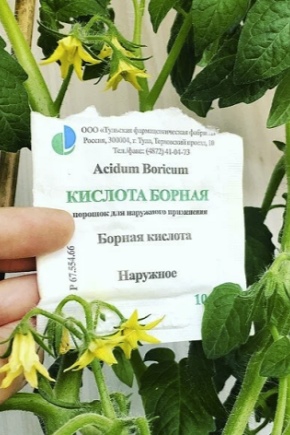
Boric acid for tomatoes is an essential component for the successful growth and development of plants. The correct dosage allows you to provide young shoots with the necessary nutrients. It is worth talking a little more about how to dilute liquid acid and powder, about the rules of application for plants in the garden.
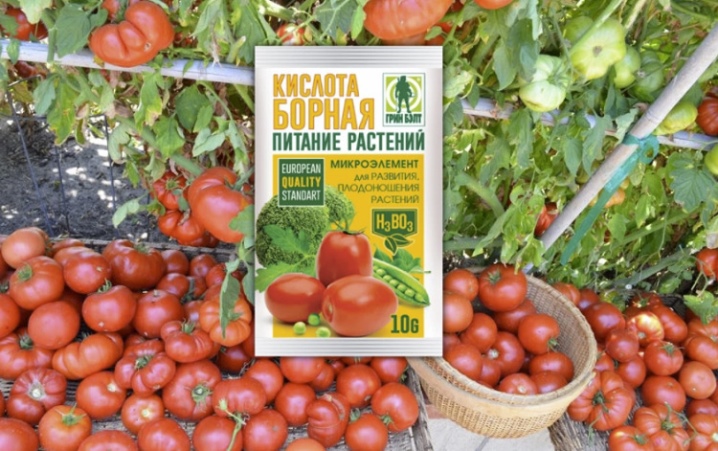
Advantages and disadvantages
The need for garden plants for additional intake of micro- and macroelements changes during the process of their growing season. Boric acid for tomatoes is a top dressing that can be applied several times during the season. For tomatoes, this substance is necessary to increase yields, prevent fungal diseases. Boron for plants in the garden is the most valuable trace element, with the help of which there is a more efficient accumulation of useful minerals from the soil. It is believed that such feeding allows tomatoes to better accumulate sugar in fruits, and has a beneficial effect on their taste.
Boric acid gives tomatoes the ingredients they need to grow even in poor soils. It is vegetable crops that often suffer from micronutrient deficiencies. Boric acid, applied in the form of a solution under the root or on branches and leaves, gives tomatoes the necessary supply of vitality. Spraying is especially useful, contributing to the intensive production of chlorophyll, preventing yellowing of the shoots.
Boron, unlike other substances, is practically not found in the soil in its natural state. Plants release it from mineral salts by absorbing it by the roots.
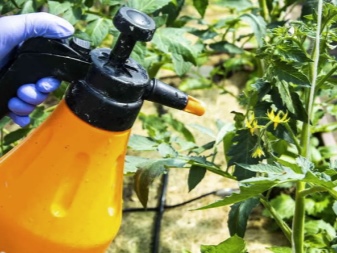
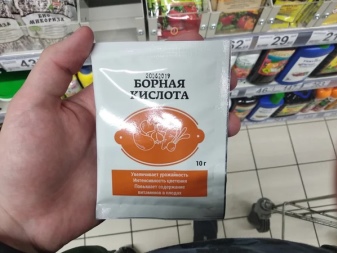
Let's note the obvious advantages of such feeding.
- Increased flowering productivity.
- An increase in the number of fruitful ovaries. One of the signs of boron deficiency is the empty flower stalks that appear on the bush.
- Increasing the resistance of fruits to unfavorable growing conditions. They better tolerate high humidity.
- Improving the palatability of the fruit. In addition to sugar content, the pulp becomes richer and denser. The size of tomatoes increases relative to fruits that do not receive such feeding.
- Prevention of late blight and other diseases of tomatoes. Plants are less likely to get sick, better resist fungal spores.
- Extension of the shelf life. Tomatoes acquire higher marketable properties, they tolerate transportation better after harvest.
- Increasing the digestibility of other minerals. In particular, boron promotes easier nitrogen accumulation in plant parts.
- Accelerated ripening. This is especially important in cold regions. A sufficient amount of boron provides an accelerated synthesis process in cells. This property works not only with tomatoes, but also with cucumbers, which also respond well to feeding.
- Improving protein and carbohydrate metabolism. This quality of boron is especially important during the period of pollination and the formation of ovaries on tomatoes.
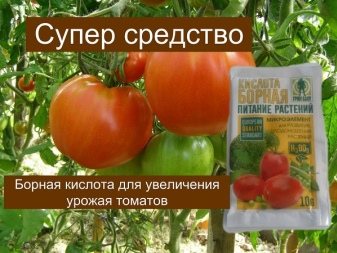
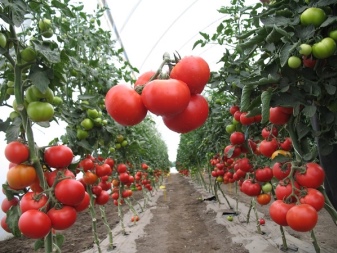
Despite the abundance of useful properties, feeding can still harm plants. The disadvantage of boric acid is the risk of overdose of this substance during processing. With an excess of the agent, especially when it is applied superficially, burns form on the leaves and branches, which can lead to the death of plants.
When preparing the solution, it is necessary to observe the exact dosages, and the feeding should be carried out strictly according to the schedule.
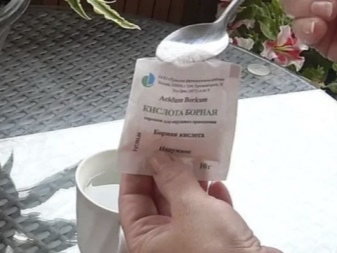
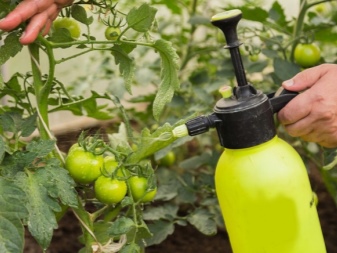
Breeding methods
Boric acid is commercially available in the form of a crystalline powder or an alcoholic solution used for medical purposes. It dissolves well in water heated to a temperature of +70 degrees. For feeding, it is necessary to dilute the liquid form of the substance according to the recipe, in certain proportions. It is important to take a powder intended for agrotechnical purposes - it gives the optimal concentration.
In order to dissolve the crystalline substance, you can not take cold water. It will not work to prepare fertilizer in it. We'll have to dilute with boiling water to an acceptable temperature or heat it up. The crystals must completely dissolve. Stirring the product will help to do everything right, speeding up this process.
The preparation of a boric acid solution in its traditional form is carried out in a specific order.
- A concentrate is prepared from the powder. 100-150 ml of water, heated to 60 degrees, is mixed with the required amount of crystalline substance.
- After complete dissolution of the powder in water, the solution is cooled. Dilute to the desired volume.

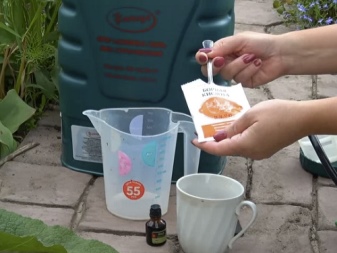
The resulting composition is ready for use as a watering or spraying agent. In its pure form, the solution is more suitable for root feeding.
If the concentration is observed, the effect of watering will be noticeable after a week.
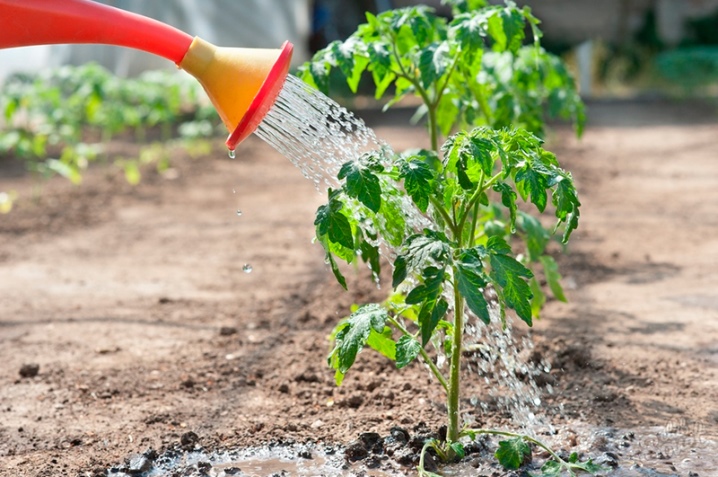
Combination with iodine
The alcoholic solution is a 3% concentration of boric acid. In crystalline form, the product is packed in paper bags of 10 grams. Iodine is considered a compatible substance for the preparation of solutions for the purpose of feeding. It is often introduced into water and with separate watering of nightshade crops, in combination with boron, a solution is often prepared in a proportion of 0.5 g of powder and 2 drops of alcoholic medical iodine per 1 liter of water. It is worth paying attention to the fact that combined agents can improve the condition of tomatoes in a variety of conditions.
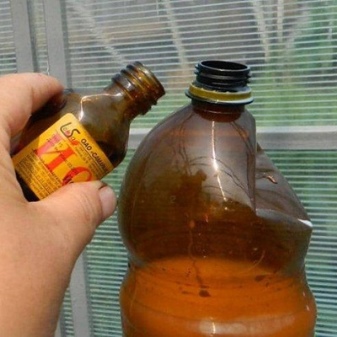
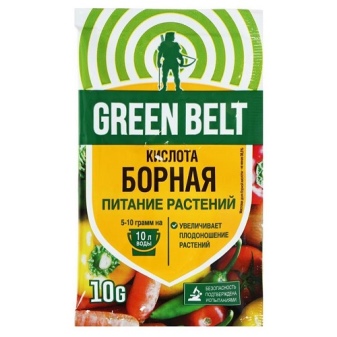
Popular recipes based on boric acid and iodine include two mixtures.
- With the addition of potassium permanganate. Such a triple composition has a beneficial effect on the general condition of the bushes, supplies them with potassium and manganese, and provides a higher prophylactic activity in the treatment of fungal infections. Add 1 tbsp to 10 liters of hot water. l. boric acid and potassium permanganate in a volume of 1 g. After dissolving the crystals, the mixture is cooled, 20 drops of iodine and 75 g of granulated sugar are added to it, mixed, used for spraying at the stage of ovary formation.
- With ash. Alkalinization of the soil is one of the most popular ways to disinfect it. This type of solution is prepared using 1 cup of wood ash and 3 liters of water. The mixture is infused for 48 hours, then mixed with 15 drops of iodine and 250 ml of hot water with 15 g of boric acid dissolved in it. The resulting nutritional composition is suitable for periodic spraying of tomato seedlings at intervals of 14 days or more.
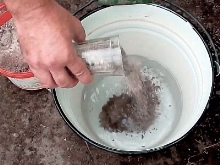
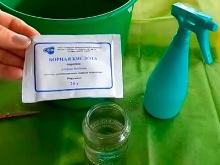
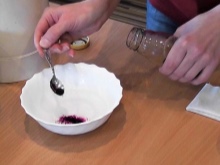
All of these formulations are well suited for foliar application. It should be noted that this method of application reduces the risk of exceeding the dosage of boric acid.
It is especially important to regularly spray in the greenhouse, where plants often do not receive enough nutrients, the soil is quickly depleted.
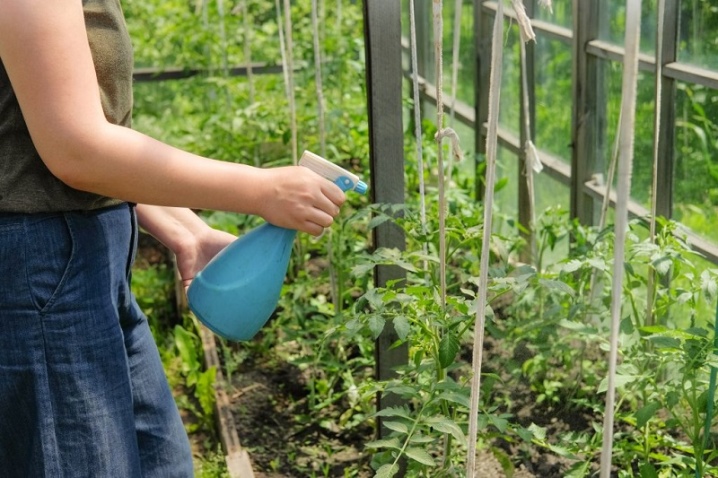
Terms and rules
Many gardeners are interested in how often boron needs to be applied per season. The standard solution is applied at a consumption rate of no more than 1 liter per 1 m2 of greenhouse or garden bed area in open ground. Enough 1-2 times per season for root watering and 2-3 times for spraying. With more frequent use of fertilizer, it is easy to overfeed the plants - you can burn the shoots, especially in young seedlings.
For spraying, it is better to choose a time of day at which solar activity is minimal. It is worth processing early in the morning or in the evening, after 5 pm, but before sunset, so that excess moisture has time to evaporate. Preventing root damage during direct fertilization is only possible with abundant concomitant irrigation with clean water.
This treatment is recommended only in the evening, better on cloudy days, in the complete absence of the sun.
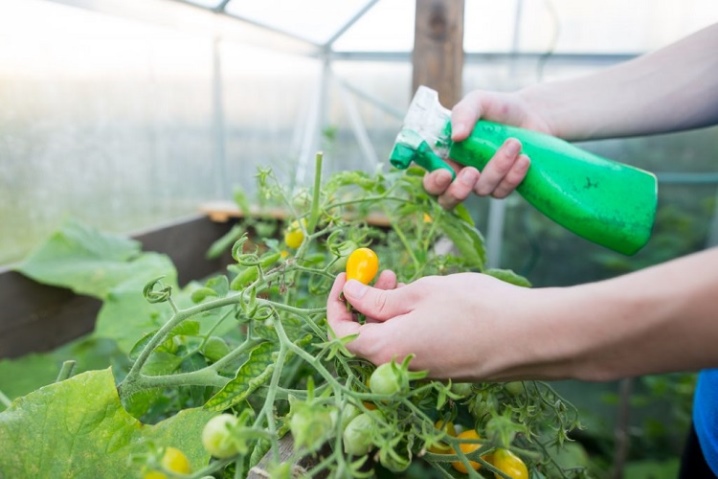
There are certain terms and rules that must be taken into account when feeding. Let's formulate the main recommendations.
- The first treatment is carried out at the stage of pre-sowing seed preparation. It is performed in February-March, depending on the region.
- The second treatment is carried out when transferring seedlings to open ground. The solution is poured into the wells in a volume of about 1 liter per 1 m2.
- The third stage falls on the stage of plant flowering. Top dressing is carried out in June by spraying from a spray bottle with a fine spray. Before this, root watering is performed, the difference in timing is about 7 days. Foliar spraying is repeated during mass flowering and at the stage of ovary formation.
- After the first signs of fruit formation begin to appear on the branches, root feeding is stopped. At this stage, they may well lead to a slowdown in the growth and development of tomatoes.
- An unscheduled application of boron preparations is performed when tomatoes are infected with late blight or other fungal diseases. Spraying on the branches is performed twice with a break of 10 days.
You should not fertilize with boron in the absence of obvious signs of its deficiency. At the stage of active vegetation, but before flowering, it is recommended to fertilize the plants with mineral complexes. It will do a lot more good.
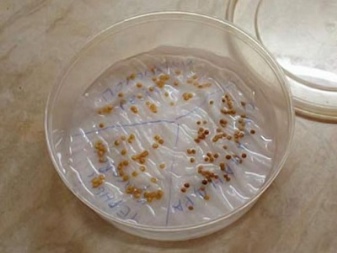
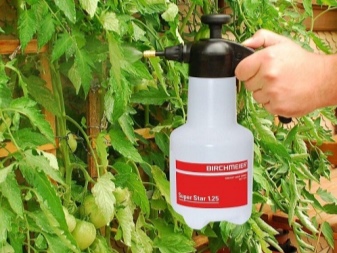
Application options
The use of boric acid is possible not only as a top dressing for tomatoes in a greenhouse or open field. With its help, a stimulating spraying is carried out in a small dosage during the formation of ovaries, during fruiting - for better ripening. The seeds are treated before sowing for disinfection, stimulation of immune defense. Rooting the powder helps fight insect pests in the soil.
The main methods for adding boric acid are quite obvious. It can be used to water the plants when planting, spray them during the season. The choice of processing method depends on what exactly you want to achieve. Boric acid can also be used at the seedling stage. You just need to spray it superficially in small quantities, apply it limitedly, taking into account the stage of development.
Compliance with the basic rules will allow you to process plants safely, without harming them.
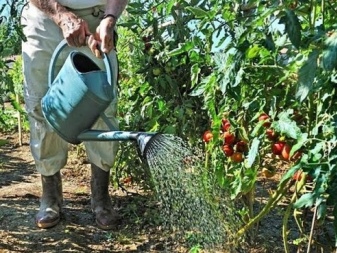
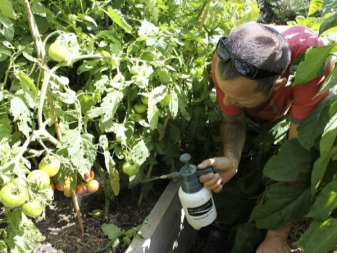
Top dressing
Boron fertilization in the case of tomatoes is possible by root and foliar dressing. It is necessary to fertilize plants during important periods of their growing season. It is customary to feed tomatoes with boron at the root only after abundant watering with clean water. The solution is prepared in a proportion of 1 g per liter of water.
The soil is moistened in the aisles and around the base of the bush. The watering rate should be no more than 1 liter of solution per 1 m2.
It is important not to point the spout of the watering can directly at the shoots. He is kept as close to the surface of the ground in the garden as possible.
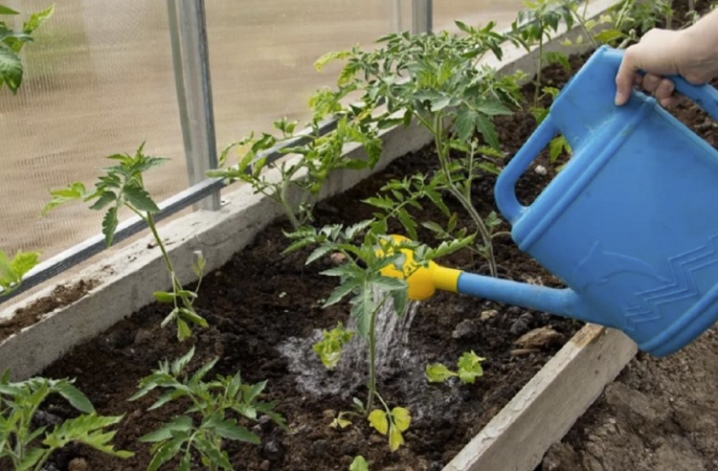
The second way to feed tomatoes with boric acid is foliar. In this case, the finished solution is sprayed over the surface of leaves, peduncles and ovaries using a garden spray bottle with a fine spray nozzle. To protect against late blight and other fungal diseases, a 5% concentration of the substance is used.
The processing order will be as follows:
- the soil is treated with a solution of potassium permanganate of low concentration;
- 7 days later boric acid spraying is performed;
- after another week, spraying with iodine solution is performed.
This combination is the best measure for the prevention of most fungal diseases: from late blight to spots of various types.
Spraying is carried out in good weather, on calm days, if the plants are planted in open ground.
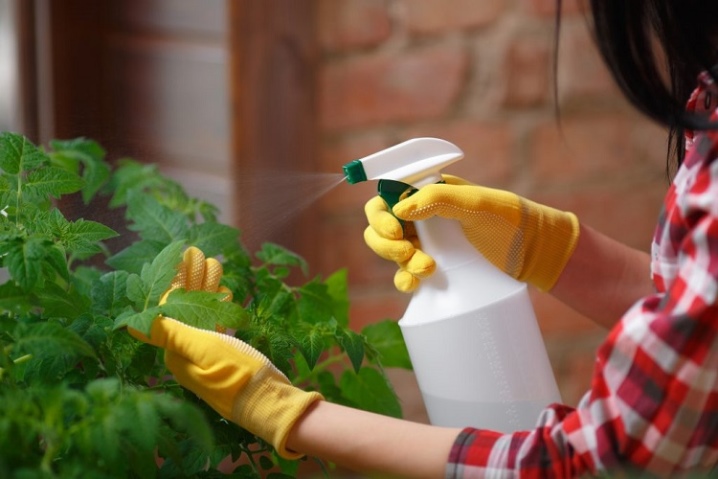
To stimulate the ovaries
In this case, feeding is carried out by the foliar method. The concentration of the solution at this stage is quite high - 10 g of boric acid per 10 liters of water. The agent is poured into a spray bottle, sprayed onto the bushes, paying special attention to the places where the ovaries are formed. The standard consumption is 1 liter of liquid solution per 1 m2 of the garden.
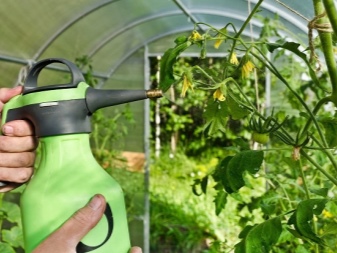
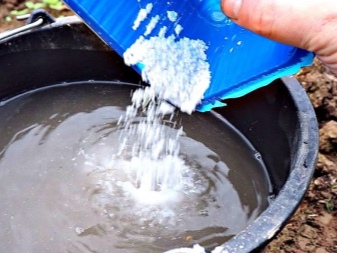
Against pests
Boric acid is often used in the fight against insect pests that actively attack nightshade crops in the garden. Its application is possible in a number of cases.
- Extermination of garden ants. They cause a lot of trouble both in the greenhouse and in the open field. You can eliminate pests by pouring boric acid solution on the entrance to the anthill located on the garden bed. You can also mix crystals or a liquid form of the drug with molasses, honey, sugar, and then spread such a bait in the places of the paths along which the insects move.
- Spraying from aphids and wood lice. The bushes are treated with a solution of boric acid, prepared in a proportion of 1 g per 1 liter of liquid. You can increase the adhesion of the product by adding a little soap solution to the composition.
- Destruction of the bear. This pest can spoil the root system of tomatoes. You can destroy the "earthen crayfish" that has appeared on the site using a bait from a mixture of 1 tbsp. l. boric acid and 1 kg of steamed grain. The ingredients are combined, laid out in the passages along which the pest moves.
It is possible to use boric acid when spraying tomatoes from pests only in the morning or evening hours, when there is no bright sun.
Neglect of this safety measure will lead to the fact that the shoots may suffer, characteristic burns will form on them.
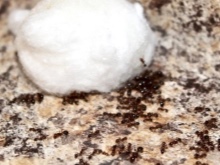

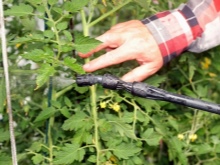
Seed soaking
Preplanting seed material is an important part of preparing tomatoes for sowing. Boric acid in the form of a solution provides plants with disinfection, helps prevent the possible development of a number of diseases. Processing is carried out according to a certain scheme.
- 1 liter of heated water is mixed with 0.2-0.5 g of boric acid. A weak solution will turn out.
- The finished mixture with completely dissolved crystals is poured into a container. You can take a wide, but not too deep plate.
- Gauze folded in several layers is placed on the bottom of the container. Seeds are laid on top of it.
- Soaking takes 24 hours.
- The procedure can be repeated immediately before planting in the soil.
The final stage of processing is watering the soil with a 2% solution of boric acid. This concentration will be sufficient to destroy pathogenic microorganisms present in the soil.
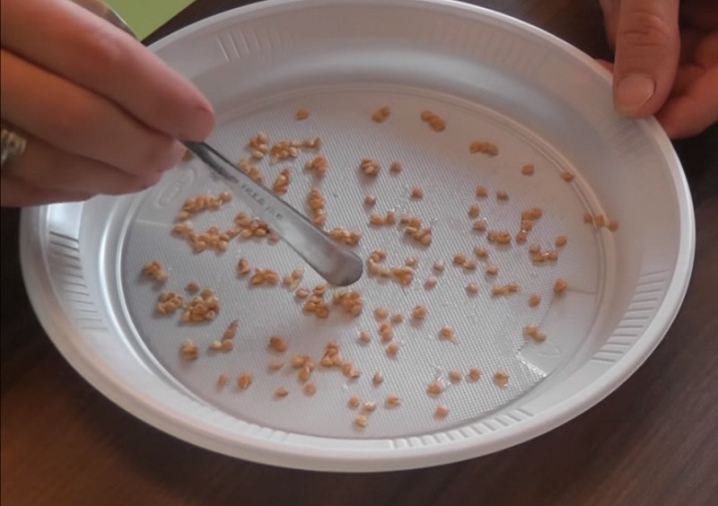
Precautions for use
For humans, boric acid is not considered a toxic substance. With short-term skin contact, there is no risk of burns. A remedy in the form of a medical solution is used at all to disinfect wounds (as an antiseptic). But this does not negate the fact that work with it must be performed in protective gloves and a gauze bandage or respirator.
The fact is that boron can accumulate in the human body upon contact with the skin. An excess of it is harmful to health, and the substance is removed from the tissues extremely slowly. That is why safety precautions should not be neglected. If boron is applied excessively to the beds, it can accumulate in the fruit. Such tomatoes, when canned, eaten fresh, can cause poisoning.
During storage, the boric acid powder should be kept away from animals. For them, this substance is toxic, and when accumulated in the body, it can lead to the development of dangerous diseases. The powder is stored in special closed cabinets.
The prepared solution should never be given to animals for drinking.
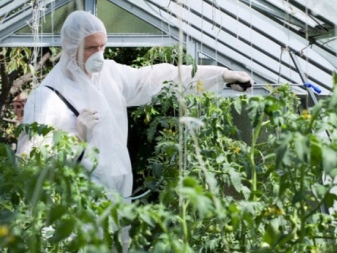
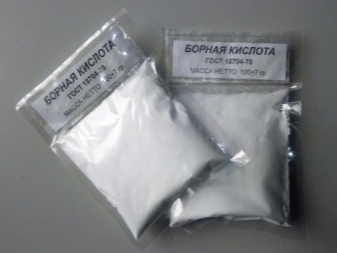
Common mistakes
The first experience of using boric acid as a fertilizer for tomatoes is often negative simply due to the lack of sufficient experience in such matters among gardeners. That is why it is recommended to first study the mistakes that are most often made when working with a solution.
- Wrong choice of water temperature. In too cold crystals of a substance simply cannot dissolve. When watering, the solution must also be warmed up. It is important that its temperature is higher than that of the soil.
- The weather is too cold. Outdoors or in a greenhouse, processing can be carried out only during periods when atmospheric temperatures exceed +20 degrees. It is advisable to choose hot days with a sufficient level of humidity.
- Complete spraying of the entire plantation. This is a big mistake. At first, it is recommended to process only 1 bush. It is especially important to follow this rule if treatment for late blight and other fungal infections is to be expected. If at the end of the spraying, after 1-2 days, the plants wilted, they began to look worse, you will have to choose other means with a fungicidal effect.
- Overdose. You cannot refuse to follow the instructions exactly. Boric acid, for all its harmlessness, can negatively affect the condition of plants. With its excess in the soil or in the stems, the leaves of the tomatoes may die.
Taking into account other people's mistakes, you can avoid your own mistakes when preparing a boric acid solution as a fertilizer or a disinfecting composition for soil and seeds.
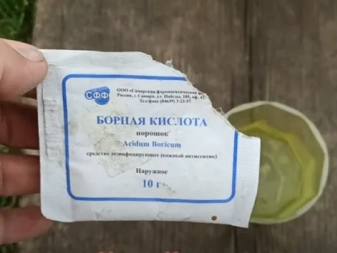
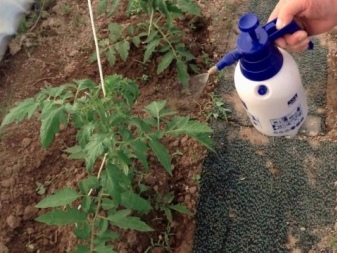
You can learn how to properly prepare a boric acid solution from the video below.













The comment was sent successfully.